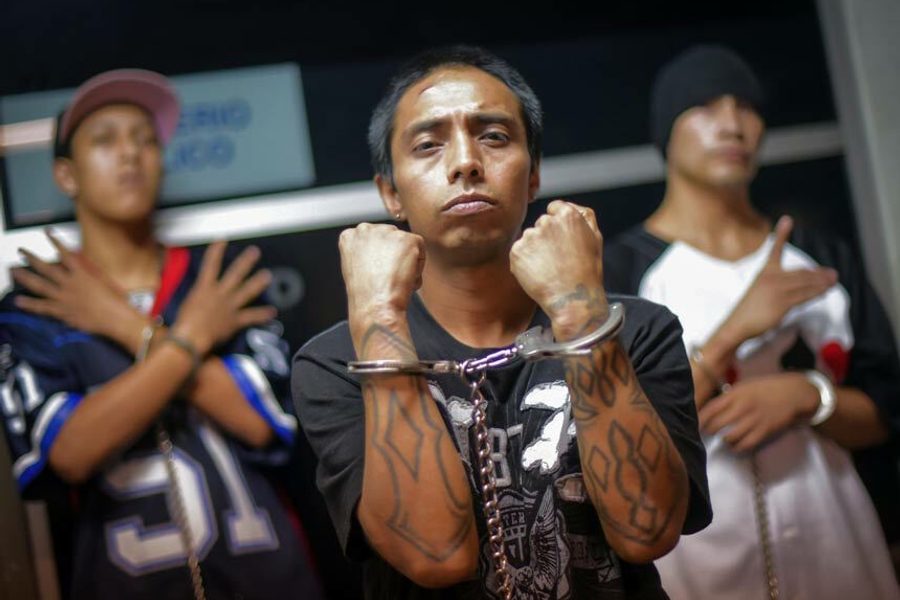Óscar Martínez’s New Book Vividly Demonstrates Why People Are Fleeing Central America
In ‘a History of Violence,’ the reporter and award-winning author of ‘The Beast’ looks at endemic drug violence
Ilan Stavans

Central America is the world’s deadliest region when it comes to homicide rates. In 2015, El Salvador, for instance, had its most violent year on record since the end of its civil war: 103.1 murders per 100,000 citizens, compared to 4.5 in the United States. But you’re unlikely to know it, because the region has commanded little global attention since the Cold War. As long as the people killing each other are poor and the bloodshed is not exported, who cares?
Yet the plight of immigrants to the United States, a central topic in the current presidential election, is in large part the result of this blood- shed. Ignoring it while debating immigration reform is like attempting to cure an illness without ever looking into its cause.
Óscar Martínez, a first-rate Salvadoran investigative reporter who works for El Faro, the left-leaning Central American online newspaper, wants to change the tenor of the conversation. For the past few years, he has made it his duty to chronicle, in complex, tersely written pieces, the ins and outs of the Central American bloodshed.
In Spanish, the tradition of the crónica is in-depth testimonial reportage blended with personal essay, and Martínez is a worthy inheritor. Through his journalism, he says, he hopes to erode the broad indifference to the bloodshed using “the same method that the sea uses against the coast: the constant lapping of the waves, whether they are gentle or turbulent.”
In 2013, Martínez’s first book in English, The Beast: Riding the Rails and Dodging Narcos on the Migrant Trail, follows the lives of people leaving their homes in Guatemala, Honduras, El Sal- vador and Nicaragua for the United States. They do the crossing by clinging to the roof and sides of The Beast, a train traversing more than 2,000-miles across Mexico. In 2014, over 100,000 of these migrants were apprehended by Mexican immigration authorities, which gives a sense of the enormity of this human relocation. Thousands disappear or die anonymous deaths along the way, and thousands more are physically, mentally and sexually abused by gangs like La Mara Salva- trucha (MS-13), Barrio 18 and Miranda Locos 13 — which aren’t a home-grown phenomenon, but started in the United States — and also by police officers.
Martínez and his investigative team have received death threats. In July 2015, he was forced to leave his home. Thankfully, he is still on the case. For that, we are all in his debt. He has followed The Beast with an extraordinary, equally haunting volume, A History of Violence: Living and Dying in Central America, that attempts to explain why so many are eager to jump on the migrant train.
He focuses on the war-torn northern triangle of Central America where El Salvador and Guatemala meet. Composed of 14 long articles written between 2011 and 2015, the volume profiles the veteran gangster Chepe Furia; rapists and murderers pardoned bythe state in exchange for testimony against the gangs; gang infighting in prisons; and an experienced coyote nicknamed Señor Coyote, who elucidates the difference between a good coyote and a bad coyote — arguing that he is one of the former, honest, who despises swindlers and is only interested in the happy relocation of migrants. Here, the reader is taken beyond the typical nomenclature of good guys versus bad guys into the subtle and not-so-subtle modalities of evil.
Martínez’s work conveys an intimate knowledge of the social and criminal ecosystem — both macro-level context and telling minutiae. But because he isn’t afraid to follow dangerous paths, the result are jewels with moments of intense emotion presented against a historical background that contemplates military, social, economic, religious, psychological and all sorts of other factors.
In “The Massacre of Salcajá,” Martínez describes the killing of eight policemen in western Guatemala during a wedding. It was the feast day of St. Anthony of Padua. Martínez leads us through the maze of gangsters, inspectors, politicians and others involved in the killing — what he calls “the complicated chess match that is Central American narcotrafficking.” At one point, the country’s minister of government, in a press conference, says the culprits “barely resemble human beings. They’re animals.”
Soon, the government launches “Operation Dignity,” a campaign to root out the operation of a big-time drug dealer called Guayo Cano. Martínez quotes some staggering statistics: “16 arrests, 43 raids, $117,226 seized, the decommission of 30 pistols, 12 rifles, nine machine guns, three shotguns, 4,412 rounds of various calibers, 65 vehicles, 56 cell phones, eight military uniforms, ten balaclavas, six bags of caustic soda, one ounce of cocaine, 67 fighting cocks, 16 deer, 43 purebred horses and four wild birds.” However, it quickly looks as if Guayo Cano’s arrest has only shaken up the chessboard. While the operation made the government look tough, players like Guayo Cano “act basically like a tag team,” Martinez discovers after talking with people in the region. “One of them is killed or extradited to the United States and then another tags in. The war against drugs, seen from this perspective, is infinite.”
Martínez is just getting started. He tells us that 90 percent of the cocaine that arrives in the United States passes through Guatemala. Evangelical churches and law offices are the most common money launderers for drug traffickers. I am in awe of Martínez’s commanding style. No one is likely to come out reading A History of Violence with a feeling that things are likely to change soon. In fact, he might be described as a pessimist — although in Central America pessimism is a generalized condition. The truth is that he is a realist of the highest order, one who portrays lawless, bankrupt states, run by disengaged elites, incapable of safeguarding their overall populations and made of disorganized, corrupt and poorly trained police. All this creates a hellish landscape of human decay. “Our society is a cauldron of oppressive military governance, the result of a failed peace process,” he argues. “We’re living with government corruption and incompetent politicians. We’re living with violence, with death always close at hand.”
A good friend of mine, also from El Salvador, came penniless to the United States in the 1990s. She saved money and paid coyotes to bring her three children. Her daughter was abused along the way and disappeared for months, until her mother and some friends traced her to the borderlands and ultimately brought her to the United States. Such things have become a typical American story. But Martínez makes clear that this, actually, is a transnational ordeal, pointing to the degree to which Central America and the United States are tied at the neck. Our disinterest in the whole situation is a form of collaboration.






